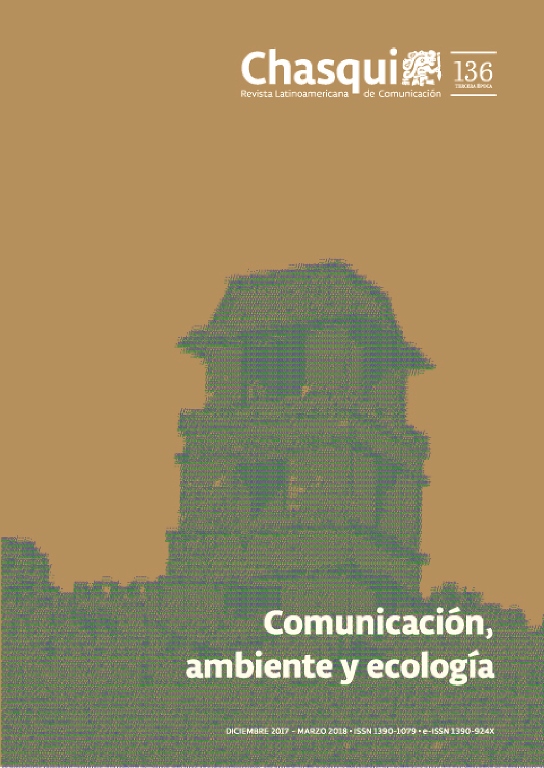The metamorphoses of the Prince
DOI:
https://doi.org/10.16921/chasqui.v0i136.3083Keywords:
Prince, visuality, state, governance, scopic regimeAbstract
The Latin American national state of the late nineteenth century organized public life by setting new forms of visibility. It assumed technologies as a look police that imposed modern rules on bodies, landscapes and cities. In this way the old functions of the baroque prince were assumed by a scopic governance that focused its efforts on nationalizing the masses, through images and educating them around signs of decency, control and order. A symbolic contract was established between the state bureaucracy and the optical devices, allowing photography and cinema to become the instruments of an aesthetic and a sovereign subjectivity.References
Andermann, J. (2007). The optic of the State. Visuality and Power in Argentina and Brazil. Pittsburg: University of Pittsburg Press.
Barros, L. & Vergara, X. (1978). El modo de ser aristocrático. El caso de la oligarquía chilena hacia el 1900. Santiago: Ediciones Aconcagua.
Bataille, G. (2004). La felicidad, el erotismo y la literatura. Buenos Aires: Adriana Hidalgo Editora.
Cortés-Rocca, P. (2011). El tiempo de la máquina. Retratos, paisajes y otras imágenes de la nación. Buenos Aires: Ediciones Colihue.
Dumézil, G. (1988). Mitra-Varuna: An Essay on Two Indo-European Representations of Sovereignty. New York: Zone Books.
Echeverría, B. (2000). La Modernidad de lo barroco. México: Ediciones Era.
Godalier, M. (1999). El poder en escenas. De la representación del poder al poder de la representación. Barcelona: Páidos.
González Stephan, B. & Andermann, J. (2006). Galerías del progreso. Museos, exposiciones y cultura visual en América Latina. Buenos Aires: Viterbo Editora.
Guerra, F-X. (2000). Modernidad e independencias: Ensayos sobre las revoluciones hispánicas: México: FCE, Mapfre.
Lanctoc, B. (2009). El gabinete óptico de la ideología: visualidad y política en la época de Rosas (1829-1852). A Contracorriente. Vol 7. N. 1 (91-110).
Le Breton, D. (2010) Rostros. Ensayo de antropología. Buenos Aires: Letra Viva.
Nancy, J-L. (2000). La comunidad inoperante. Chile: Editorial Arcis.
Paz, O. (1978). El ogro filantrópico. México: Vuelta 21.
Pinto, J. & Valdivia, V. (2009). ¿Chilenos todos? Santiago de Chile: Lom.
Rodríguez de la Flor, F. (2009). Imago: La cultura visual y figurativa del Barroco. Madrid: Editorial Abada.
Rojas, S. (2010). Escritura Neobarroca. Santiago: Editorial Palidonia.
Ruiz, C. (2003). Independencia y anarquía o la conflictiva formación del orden oligárquico en América Latina. Tesis para optar al Grado de Magíster en Estudios Latinoamericanos. Facultad de Filosofía y Humanidades, Universidad de Chile.
Saavedra Fajardo, D. (2016 [1640]). Empresa 44. Idea de un príncipe político cristiano. Representada en cien empresas. Publicado en Lemir 20 - Textos: (519-968).
Toulmin, S. (2001). Cosmópolis: el trasfondo de la modernidad. España: Península.
Vergara, J. (2009). Desde el bastidor al imaginario nacional: Rugendas y la representación de la identidad chilena. En Cid, G. & San Francisco, A. Nación, nacionalismo en Chile. Siglo XIX. Chile: Ediciones del Centro de Estudios Bicentenario.
Downloads
Published
Issue
Section
License
- Authors retain copyright and grant the journal right of first publication with the work simultaneously licensed under a Creative Commons Attribution-NoDerivs License (CC BY-ND) that allows others to share the work with an acknowledgement of the work's authorship and initial publication in this journal.
- Authors are able to enter into separate, additional contractual arrangements for the non-exclusive distribution of the journal's published version of the work (e.g., post it to an institutional repository or publish it in a book), with an acknowledgement of its initial publication in this journal.
- Authors are permitted and encouraged to post their work online.

